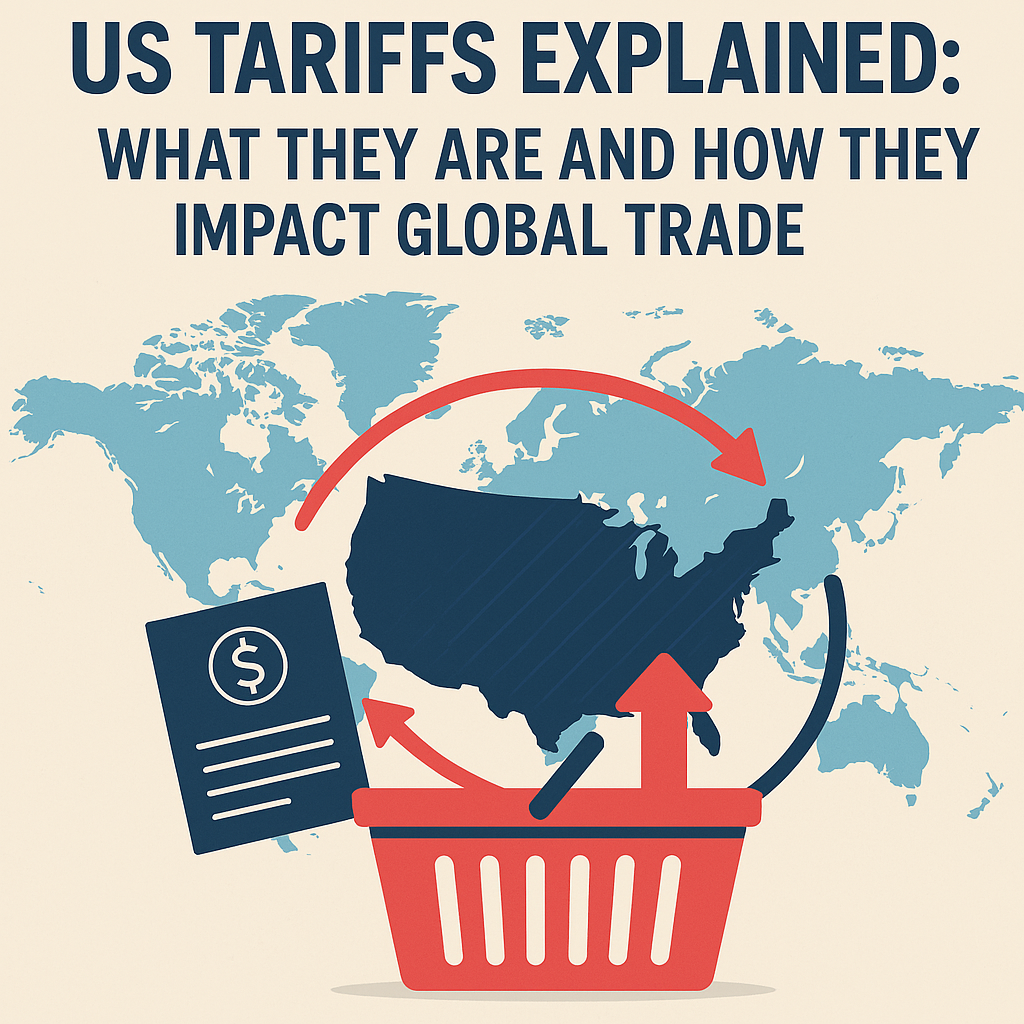In recent years, US Tariffs have been at the center of global trade debates, often making headlines and influencing international relations. But what exactly are tariffs, and how do they affect economies both at home and abroad? This blog dives into the world of US tariffs, offering a clear understanding of how they work and why they matter.
What Are US Tariffs?
In simple terms, tariffs are taxes imposed on imported goods. When a product is brought into the United States from another country, the government can apply a tariff, usually calculated as a percentage of the item’s value. The idea is to make foreign goods more expensive, encouraging consumers to buy products made in the USA instead.
There are a few types of tariffs:
- Ad valorem tariffs: A percentage of the product’s total value.
- Specific tariffs: A fixed fee per unit (e.g., $5 per item).
- Compound tariffs: A mix of both.
By using these methods, the government can control how much foreign products compete with local ones.
Why Does the US Use Tariffs?
The use of US Tariffs isn’t random—they serve multiple strategic purposes:
- Protecting domestic industries: By making foreign goods more expensive, local businesses have a better chance to compete.
- Creating leverage in trade negotiations: Tariffs can be used as a bargaining chip to encourage fairer trade deals.
- Generating revenue: Tariffs contribute to the federal budget.
- Correcting unfair trade practices: Countries accused of “dumping” (selling products below market value) may face higher tariffs.
Tariffs aren’t always about protectionism—they can also reflect broader economic and political goals.
How US Tariffs Impact Global Trade
Tariffs don’t just affect prices in local stores—they ripple across the globe.
When the US imposes tariffs, other countries often respond with their own. This back-and-forth can escalate into trade wars, disrupting supply chains, slowing down international commerce, and increasing the cost of goods.
Take the US-China trade war as an example: When the US placed tariffs on hundreds of billions of dollars’ worth of Chinese goods, China retaliated with similar tariffs on American exports like soybeans, automobiles, and electronics. The result? Volatility in global markets and uncertainty for businesses on both sides.
The Real-World Impact on Consumers and Businesses
While tariffs are aimed at foreign producers, it’s often American consumers and businesses who feel the pinch.
For Consumers
When tariffs raise the cost of imported goods, retailers often pass that cost onto buyers. This means higher prices on everything from electronics and clothing to food and furniture.
For Businesses
Many US companies rely on imported materials or parts. When tariffs increase those costs, it can reduce profit margins, limit growth, or even force layoffs. Small and medium-sized businesses are especially vulnerable.
Recent Developments in US Tariff Policy
In the last decade, US Tariffs have been a major tool in reshaping global trade policy. Under the Trump administration, tariffs were heavily used to pressure China and other nations. Billions of dollars’ worth of goods were affected, and the policy marked a shift toward economic nationalism.
The Biden administration took a slightly different approach—maintaining some tariffs while reopening trade talks with allies and competitors alike. Discussions around climate tariffs, digital taxes, and fair labor practices have also become part of the broader tariff conversation.
What Does the Future Hold?
The role of US Tariffs in global trade is far from over. As the world economy becomes more interconnected, tariffs will continue to be used to balance national interests, protect industries, and shape foreign relations.
However, striking the right balance is key. Too many tariffs can hurt the economy by making goods more expensive and reducing trade. Too few, and domestic industries may struggle to compete.
As a consumer or business owner, staying informed about tariff policies can help you make smarter financial decisions and prepare for potential changes in pricing, supply, and demand.
Final Thoughts
Whether you’re a small business owner, a global investor, or a curious consumer, understanding US Tariffs is crucial in today’s economic climate. They may seem like a dry policy tool, but their effects are anything but boring—they touch every corner of global trade and have real consequences for people like you.
As trade policies continue to evolve, keeping an eye on tariff trends can help you stay ahead in an ever-changing marketplace.

